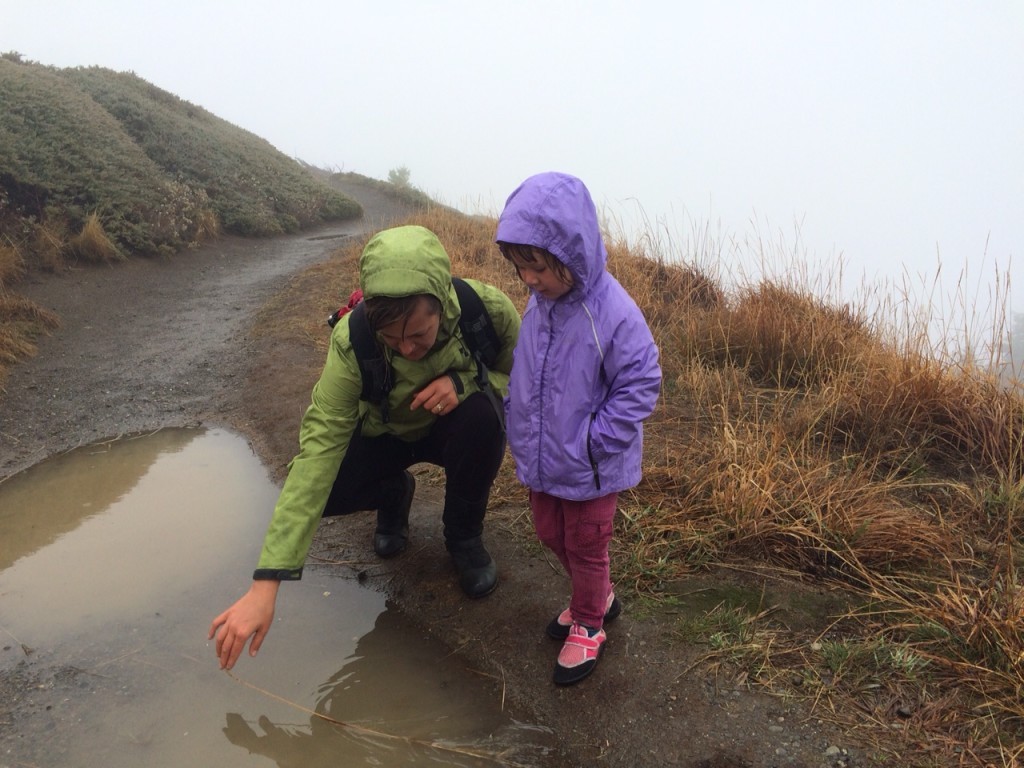Your body needs many dietary vitamins and minerals to maintain its physiological homeostasis, and it requires a variety of mechanical nutrients (loads that create cellular deformations that facilitate cellular processes) as well.
Walking is a category of movements, just like fat is a category of types of fatty acids. I could tell you that your diet is too low in fat and you need to eat more. But does this mean you need more manufactured transfats? Or that you need many different types of fats, because each plays a different role and offers unique nutrients? You could still be malnourished if you only added one type of fat, without determining which kinds of fats you were in need of.
Similarly, walking offers a broad range of nutrients as a category, but you have to make sure you’re not consuming only walks of a certain type. You won’t be fully meeting your movement macronutrient needs if you’re always on asphalt, or a path, or always walking a dog, always going the same speed, always on a treadmill, always on the same route, always on the phone, always in the same temperature, always at the same time, always in the same mood, always on the same slope, always in the same shoes, always on the same texture, always the same distance. The many variables affecting the nutrition of your walking bout are mind-blowing.
Here are 13 ways to make your walking more nutritious.
#1: Wear minimal shoes: Since nutrients are loads, make sure you’re not wearing shoes that reduce the movements of various body parts (hence reducing the loads created). Narrow toe-boxes reduce the use of the muscles that facilitate the widening of the toes away from each other. Heels on a shoe change the ranges of motion your body experiences at the ankles, knees, and hips (and, by proxy, the muscles used for walking). Tip: Read Whole Body Barefoot for the steps necessary to transition well to minimal footwear.
#2: Add “Vitamin Texture”: When you’re unshod (barefoot), walking over lumps and bumps deforms the 33 joints found in each foot, creating loads in those parts.
If you always walk in a shoe, even in a minimal shoe (or barefoot), on flat, debris-free, or man-made/cleared surfaces, there is nothing to mobilize these joints. Your body is moving relative to the ground, but your feet aren’t moving much relative to themselves. Those lumps and bumps make a difference to your body! Tip: Look to the side of that flat-and-level. Is there something a tad more textured you could be walking on? Once you start looking, you're likely to find texture more often.
#3: Add “Vitamin Terrain”: Every geometry (shape) your body assumes creates a different load. Adding hills (both up and down) as well as slopes that challenge your ankles (think of the ankle’s experience walking the sloped shore of a beach) uses your body—and creates loads—in ways not available in the flat-flat-flat settings most of us are used to. Tip: Choose routes that have hills (bonus points for hills and texture--super-nutritious!)
#4: Go with a group: Walking with others challenges your pace—resulting in a pattern that can be faster or slower than you’re used to. Either way, a change in speed works your body differently (i.e., provides different nutrients). Plus, being social can change your mood—which also changes how you walk. (For some fun, play with this online gait lab, which allows you to see how gait changes with mood). Tip: WALK for special events. Is it a holiday? Create a group walk. Is it a Super Blood Lunar Eclipse? Head up to the freezing cold mountains and leave yourself a 1/2 mile to hike that last bit. Don't only make nutrients, MAKE MEMORIES.


#5: Ditch the technology: Do you do all your walking with a device in your hand? Turns out, walking while texting changes your gait pattern (as you’d imagine). I’m all for walking while working (as opposed to walking only at the end of your day), but what I don’t recommend is only walking while working. Walking while texting is one nutrient, but so is walking with your head up and arms a-swinging.
#6: Add some technology: Remember #5? Well here's the thing: If you'd be able to walk farther or more frequently with the assistance of technology, then do it. If you can make work time WALK time, with some app (I just loaded up a Skype app so I could record my podcast while walking outside!), then you'll be stacking your life. Every once in awhile, load up a 4–5 hour audiobook (or all of the Move Your DNA podcast episodes) and kick out one super-walk. Walking 3–5 miles a day is great, but so is a 12–20 miler once a month. Train, of course, by building up to it, but consider a monthly “go for it” challenge. Tip: If you've loaded up a book or podcast, switch your phone to airplane mode while you walk. 
#7: Carry something: Are your hands always free? There is this idea, similar to ergonomics, that we want to balance the use of our body at every second. But here's the thing. Every way of holding something requires that you balance the holding with a particular set of muscles. Change the location of what you're holding and, boom, you've changed the set of muscles used. By varying up your holds, you'll be using more of your parts for a bout of walking. This is different than always putting your stuff in a backpack, where the same muscles are used over and over again. Savvy? Tip: Ok, you love your backpack and I love mine too. But what I do is carry that backpack in different ways. I've been posting some pics of mixing it up on my Instagram account (search #varyyourcarry).
#8: Walk with a kid: Quick, go get on your bike and try riding it fast, and then ride it slow… at a snail’s pace. See how the forward motion of the bike when you’re going fast reduces the need for your body to balance and stabilize each movement? Walking slow vs. walking fast is the same thing. Walking with humans who aren’t as fast as you does not lessen the value of your movement—it’s simply different. Volunteer to lead (or follow) a group of kids on a hike. Ever tried to herd cats? It’s kind of like that, only with more snacks. Herding cats is some seriously nutritious movement, so just go with it. Tip: A group of kids is actually easier than one or two kids. I know it seems like more, but it's actually less. It's weird kid math, but trust me on this one. We often take a group of kids out for a break. 
#9: Go someplace novel: Walking in a familiar place automatically changes your level of alertness—not just with your eyes and ears, but with respect to how you’re moving. Familiarity breeds comfort and comfort breeds, well, mindlessness. Don’t ALWAYS walk in your neighborhood, or on the same path through the woods.Tip: Have no where else to walk but a single path? Mix it up somehow. If it's a loop, go in a different direction. Walk on the other side of the sidewalk. Change something, and it will make you more alert.
#10: Gather (or hunt, for that matter): Walking—staying upright and moving at one speed—for your entire walk isn’t as nutritious as stopping to bend, stoop, squat, reach, and whatever else you would be doing were you relying on your movement to supply you with your food. Tip: If you're with kids, don't stand there while they look at everything, look at it too, by bending and squatting to get on their level. No kids? Keep your eyes looking at everything and challenge yourself to "reach or jump to grab that leaf" or bend down to move debris instead of simply kicking it.

#11: Use your butt more: Tips #1 (minimal shoes) and #3 (Vitamin Terrain) will help with this, as will doing corrective exercises that increase your range of motion in various parts before you walk. The point here is that butt use during walking provides a very particular nutrient that you are very likely deficient in if all of your walking is done in a modern context, with a body adapted to a sedentary lifestyle. Tip: Learn the pelvic list. Once you've got that list on one leg and then row that leg behind you like an oar. That, my friends, is where "Vitamin Posterior Push-off" can be found.
#12: Walk farther: You know that recommendation to take 10,000 steps a day? That’s a minimum. Why not strive for something bigger? Something really challenging? Like 15,000 steps. And then 20,000. The point being, that there is probably significant room to grow your walking distance…and no, it doesn’t have to be all at once! (See #13.) Tip: Take a walk right when you get up. It doesn't have to be a long one, just walk around the block before you *gasp* make your coffee. Also, convert your steps to miles and talk about your distance in that way. Saying things like "10,000" seems like a lot, but not as much as a 3 or 4 miles. When we use 10,000 its a way of framing movement--hey, I've done 10,000 of something!--that perhaps clouds how little 10,000 steps is given our capacity for movement. And P.S. Your pedometer isn't really measuring steps, it's measuring jolts. So we've really started extrapolating mileage from what is likely to be a significant overestimate of actual distances walked. Not trying to be a drag, but I'm calling a spade a spade here.
#13: Walk more frequently: Say you always walk 5 miles a day. The nutrition of those walks changes based on how those miles are clumped. Do you always walk once per day, and then sit for extended periods of time around those 5 miles? Take one 2-mile and then a 3-mile walk later. Take five 1-mile walks, with at least an hour in between each. Breaking up repetitive geometry has shown to change arterial function, so while an extended bout of exercise provides one set of positive outcomes, there are others you are missing because you’re doing all your movement at once. Tip: For one week, challenge yourself to take a 5 minute walk every hour. Bonus: You'll probably end up walking farther as well.
Check out my Instagram account for images and more tips on how you can stack your life for more movement, without cutting in to other areas of your life.
Find more tips, articles, videos, and podcasts, all about walking, on Our Top Foot, Shoes, and Walking Resources.




